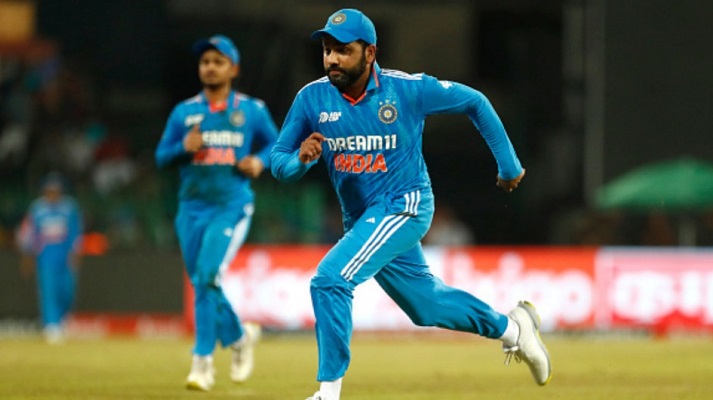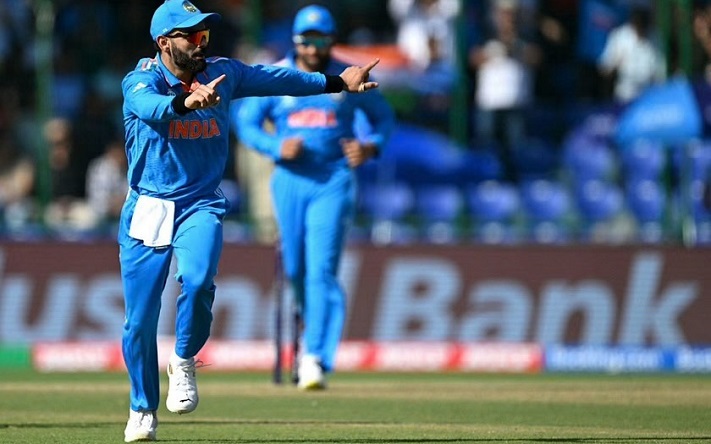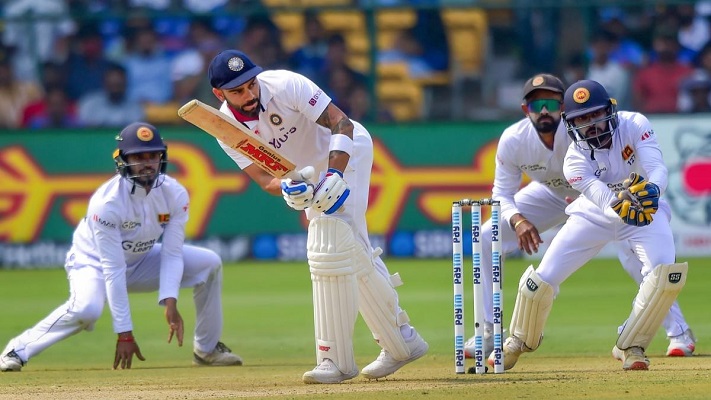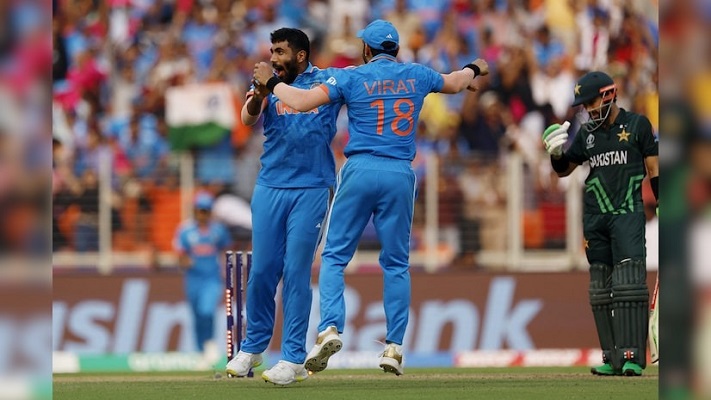|
Listen to this article
|
Cricket is a game of numbers, and one of the most crucial statistics in the sport is the run rate. Whether you’re a dedicated cricket fan or just a casual observer, understanding how to calculate the run rate can add a new layer of appreciation to the game. In this text, we’ll explore the formula and provide some examples to demystify this fundamental cricket statistic.
What is Run Rate in Cricket?
The run rate in cricket is a measure of a team’s scoring rate, representing the average number of runs scored per over (a set of six balls bowled). It is a vital statistic in limited-overs formats like One Day Internationals (ODIs) and Twenty20 (T20) matches, where teams have a predetermined number of overs to bat. A high run rate indicates an aggressive batting approach, while a lower run rate suggests a more conservative strategy.
How to Calculate Run Rate in Cricket?
The formula for calculating the run rate (run rate formula) in cricket is straightforward:
Run Rate = (Total Runs Scored) / (Total Overs Faced)
Let’s break it down:
- Total Runs Scored: This is the cumulative number of runs the batting team has scored in their innings.
- Total Overs Faced: This is the number of overs bowled to the batting team. In limited-overs cricket, each team gets a fixed number of overs to bat, typically 50 overs in ODIs and 20 overs in T20s.
Example 1: ODIs
Suppose a cricket team scores 300 runs in 50 overs in an ODI match. To calculate their run rate:
Run Rate = 300 runs / 50 overs = 6 runs per over
So, the team’s run rate in this ODI match is 6 runs per over.
Example 2: T20s
In a T20 match, a team manages to score 150 runs in their allotted 20 overs. To find their run rate:
Run Rate = 150 runs / 20 overs = 7.5 runs per over
Therefore, the team’s run rate in this T20 match is 7.5 runs per over.

In summary, the run rate in cricket is a fundamental statistic that provides insights into a team’s batting performance. By using a simple formula, anyone can calculate it and gain a deeper understanding of the ebb and flow of a cricket match. Whether you’re watching a thrilling T20 contest or an intense ODI battle, the run rate is your key to deciphering the game’s scoring dynamics.
Cricket Run Rate Calculation
Let’s delve deeper into the process of calculating the run rate in cricket, including some additional insights and examples:
The run rate is a crucial statistic in cricket that provides valuable insights into a team’s batting performance. To calculate it accurately, follow these steps:
- Collect the Necessary Information: To calculate the run rate, you need two essential pieces of data:
- Total Runs Scored: This is the sum of all runs scored by the batting team during their innings. Keep track of every run, including singles, boundaries (four runs), and sixes (six runs).
- Total Overs Faced: The number of overs bowled to the batting team. In limited-overs formats, each over consists of six balls, and the total overs faced is predetermined based on the format (e.g., 50 overs in an ODI, 20 overs in a T20).
- Apply the Formula: Once you have the required information, use the formula for run rate: Run Rate = (Total Runs Scored) / (Total Overs Faced)For example, if a team scores 250 runs in 50 overs during an ODI match, you would calculate the run rate as follows:
Run Rate = 250 runs / 50 overs = 5 runs per over
- Interpret the Result: The result represents the average number of runs scored by the batting team in each over they faced. In the above example, the team’s run rate is 5 runs per over. This means, on average, they scored 5 runs in every over during their innings.
| Insight | Explanation |
|---|---|
| Scoring Patterns | A high run rate suggests an aggressive approach with frequent boundaries. A lower run rate may indicate a cautious, defensive strategy. |
| Dynamic Nature | Run rate is dynamic; teams often aim to increase it in later stages, known as the “powerplay.” |
| Required Run Rate | When chasing a target, teams monitor the required run rate to reach it, calculated similarly to the run rate. |
| Historical Context | Comparing current run rates to historical performance or opponents’ rates provides valuable context. |
In summary, calculating the run rate in cricket is a straightforward yet crucial process that provides valuable insights into a team’s batting performance. It’s a dynamic statistic that evolves throughout innings, reflecting a team’s scoring strategy and tempo. Understanding the run rate enhances one’s appreciation of the game and enables teams to make informed decisions about their approach to batting or bowling in a match.

Why Is Cricket Run Rate Important?
| Reason | Explanation |
|---|---|
| Assessing Performance | Run rate is a quick indicator of a team’s batting performance, allowing assessment of their scoring rate. |
| Chasing Targets | Helps batting teams strategize when chasing a target, indicating whether the required run rate is achievable. |
| Bowling Tactics | Informs bowling tactics; high run rates may require containment strategies, while low rates may encourage aggression. |
| Comparing Teams | Useful for comparing teams in a tournament, highlighting those with consistently strong batting line-ups. |
Is Net Run Rate the Same as Run Rate?
No, the net run rate (NRR) is not the same as the run rate (RR) in cricket. While both metrics are related to a team’s scoring in limited-overs formats, they serve different purposes and are calculated differently.
| Metric | Run Rate (RR) | Net Run Rate (NRR) |
|---|---|---|
| Calculation | Average runs scored per over during a single innings. | Comprehensive metric based on all matches played in a tournament’s group stage. |
| Formula | RR = (Total Runs Scored) / (Total Overs Faced) | NRR = (Total Runs Scored – Total Runs Conceded) / (Total Overs Faced) |
| Purpose | Measures a team’s scoring rate in a specific match. | Assesses a team’s overall performance and ranking in a tournament. |
| Scope | Limited to a single innings in one match. | Considers a team’s performance across all matches in a tournament. |
| Tournament Use | Typically not used for tournament rankings. | Frequently used as a tiebreaker to determine team rankings when points are equal. |
This table illustrates the key differences between Run Rate (RR) and Net Run Rate (NRR) in cricket, highlighting their purposes, calculations, and scopes.

In essence, while the run rate is a simple measure of a team’s scoring rate in a single match, the net run rate considers a team’s performance across multiple matches, making it a more valuable statistic for tournament scenarios. It helps in assessing a team’s overall performance, both with the bat and the ball, and is often a tiebreaker when teams have the same number of points in a tournament’s group stage.
What Is a Good Run Rate in Cricket?
The assessment of what constitutes a good run rate in cricket can vary depending on various factors, including the format of the game, pitch conditions, and match context. What may be considered a good run rate in one situation may not be the same in another. Here’s a general guideline for different formats:
- Test Matches: In Test cricket, where there is no limit on the number of overs in an innings, the run rate is not as critical as in limited-overs formats. Teams often aim for a run rate that allows them to build a substantial total while minimizing the risk of losing wickets. A run rate of 3 to 3.5 runs per over is often considered reasonable in Test cricket.
- One Day Internationals (ODIs): In ODIs, where each team gets 50 overs to bat, a good run rate typically falls between 5 to 6 runs per over. However, the exact run rate considered good can vary based on factors such as pitch conditions, team strength, and the target being chased.
- Twenty20 (T20) Matches: T20 cricket is known for its fast-paced and aggressive nature. In T20 matches, a good run rate is generally considered to be 8 runs per over or higher. Teams often aim to maintain a run rate above 8, especially in the early stages of the innings, to build a competitive total.
It’s important to note that the definition of a good run rate can change within the course of a match. For example, a team might aim for a higher run rate in the initial overs to capitalize on powerplays and then adjust their approach as the innings progresses. Additionally, a good run rate can also depend on the specific conditions of the ground, the quality of the opposition’s bowling attack, and the target they are setting or chasing.

Ultimately, what constitutes a good run rate in cricket is subjective and can vary from match to match. Teams often adapt their strategy based on the situation, aiming for a run rate that aligns with their game plan and the context of the game.
Highest Run Rate in Cricket
The highest run rates in cricket have been achieved in various formats and across different periods. Run rates can vary significantly depending on factors such as pitch conditions, the quality of the batting lineup, and the approach of the batting team. Here are some notable records of the highest run rates in cricket history:
One Day Internationals (ODIs):
- Highest Team Run Rate in an Innings (ODIs):
- Record: 13.04 runs per over
- Achieved by: Australia against Afghanistan on February 26, 2015, during the ICC Cricket World Cup. Australia scored 417 runs in 32 overs.
- Highest Individual Run Rate in an Innings (ODIs):
- Record: 16.71 runs per over
- Achieved by: AB de Villiers of South Africa against West Indies on January 18, 2015. He scored 149 runs off 44 balls.
Twenty20 Internationals (T20Is):
- Highest Team Run Rate in an Innings (T20Is):
- Record: 16.20 runs per over
- Achieved by: Afghanistan against Ireland on February 23, 2019, in a T20I match. Afghanistan scored 278 runs in 17 overs.
- Highest Individual Run Rate in an Innings (T20Is):
- Record: 31.16 runs per over
- Achieved by: Scott Styris of New Zealand against India on September 25, 2007. He scored 38 runs off 7 balls.
Test Matches:
In Test cricket, high run rates are less common due to the longer format and emphasis on building solid innings. Therefore, run rates in Test matches are typically lower compared to limited-overs formats.

While there are no official records for the highest team or individual run rates in Test matches, there have been instances where teams have scored quickly in specific sessions or days of a Test match. However, these instances are not usually measured in terms of run rate records.
It’s important to note that achieving an exceptionally high run rate often involves a combination of aggressive batting, favorable pitch conditions, and sometimes a weaker bowling opposition. These records serve as memorable moments in cricket history when teams or players displayed extraordinary batting prowess and scoring ability.
Several Other Important Metrics in Cricket
Cricket is a game filled with statistics, and beyond run rate and net run rate, several other important metrics and statistics are used to assess a team’s and player’s performance. These metrics provide a comprehensive view of various aspects of the game. Here are some other important cricket metrics:
| Metric | Description |
|---|---|
| Batting Average | Total runs scored divided by the number of times the player has been dismissed. |
| Bowling Average | Total runs conceded divided by the number of wickets taken. |
| Strike Rate (Batting) | Runs scored per 100 balls faced. |
| Strike Rate (Bowling) | Balls bowled per wicket taken. |
| Economy Rate | Runs conceded per over bowled. |
| Boundary Percentage | Percentage of total runs scored from boundaries (fours and sixes). |
| Dot Ball Percentage | Percentage of deliveries bowled as dot balls (no runs scored). |
| Catches Taken | Number of catches successfully taken by a fielder. |
| Run Outs | Number of run-outs executed by the fielding team. |
| Strike Rate Differential | Comparison of a batsman’s strike rate against pace and spin bowlers. |
| Duck Percentage | Percentage of times a batsman gets out for zero runs. |
These cricket metrics, among others, are used by analysts, coaches, and fans to analyze and appreciate the nuances of the game. They help in evaluating individual and team performance and contribute to the overall understanding of cricket’s strategy and dynamics.

Conclusion
In the realm of cricket, the run rate stands as a silent sentinel, silently yet powerfully measuring the ebb and flow of the game. It’s a numerical reflection of a team’s batting prowess and strategy, an indicator of their ability to dominate or defend, and a pivot around which match dynamics revolve. From the dizzying heights of aggressive T20 run rates to the measured precision of Test cricket, this statistic paints a vivid picture of how a team navigates the fine balance between caution and audacity.
The run rate is not just a number. It’s a story in itself, revealing the calculated risks, the calculated aggression, and the chess-like moves of a cricket match. It’s a metric that captivates fans, guides captains, and sets the tone for thrilling contests. As cricket continues to evolve and adapt, the run rate remains an unwavering constant, reminding us that amidst the pristine whites or vibrant colored jerseys, numbers have their own compelling narrative to tell in the world’s most beloved sport.
Video Review
FAQ
Q: What is the run rate in cricket?
A: The run rate in cricket is the average number of runs a team scores in one over of their innings. It is calculated as the total runs scored divided by the total overs faced.
Q: Why is the run rate important in cricket?
A: The run rate is important as it provides insights into a team’s batting performance, helps assess the required scoring rate in a chase, guides bowling tactics, and is used for tiebreakers and rankings in tournaments.
Q: In which formats of cricket is the run rate commonly used?
A: The run rate is commonly used in limited-overs formats such as One Day Internationals (ODIs) and Twenty20 (T20) matches, where teams have a set number of overs to bat.
Q: What does a high run rate indicate in cricket?
A: A high run rate suggests that a team is scoring quickly and aggressively. It often reflects an attacking batting approach with more boundaries.
Q: What does a low run rate indicate in cricket?
A: A low run rate suggests that a team is scoring at a slower pace. It may indicate a more conservative or defensive batting strategy.
Q: How is the net run rate (NRR) different from the run rate (RR)?
A: The run rate (RR) measures a team’s scoring rate in a single match, while the net run rate (NRR) assesses a team’s overall performance across multiple matches in a tournament, considering both runs scored and runs conceded.
Q: How is the required run rate calculated in a cricket chase?
A: The required run rate is calculated using the same formula as the run rate but based on the target score and the remaining overs in the innings.
Q: Can a team with a lower run rate win a cricket match?
A: Yes, a team with a lower run rate can win a match if they successfully defend their total or if they chase down the opposition’s total within the allocated overs.
Q: Are there any records for the highest run rates in cricket?
A: Yes, there are records for the highest run rates achieved in specific innings in both ODIs and T20Is, reflecting exceptional batting performances.
Q: How can teams use the run rate to strategize during a cricket match?
A: Teams can use the run rate to adjust their batting or bowling strategies. A low run rate might prompt a change in batting approach, while a high run rate might lead bowlers to focus on containment.

I’m Johar, hailing from the vibrant nation of India. My journey into the realm of online sports betting began as a curiosity and quickly transformed into a passion. With a background in mathematics and a fascination for sports, I found myself naturally drawn to the world of odds, probabilities, and strategic wagering.
Through my articles, I aim to bridge the gap between the complexities of sports betting and the everyday bettor, offering insights, tips, and a deeper understanding of this thrilling pastime. My commitment lies not only in helping others make informed betting decisions but also in promoting responsible gambling practices within the diverse and dynamic landscape of Indian sports betting.
